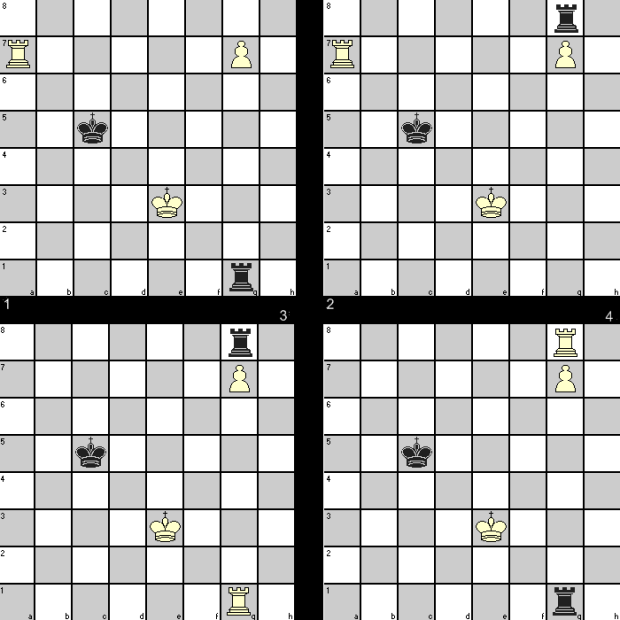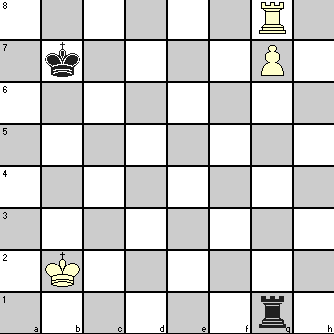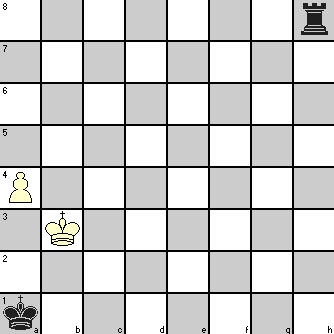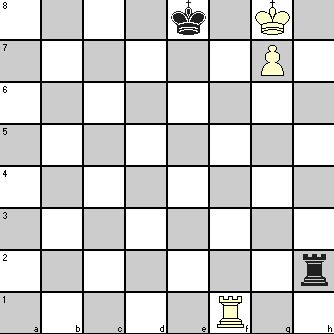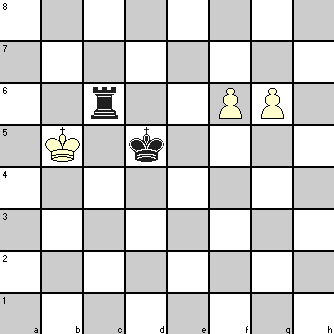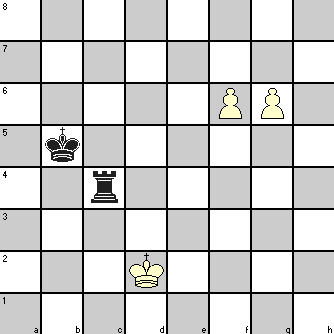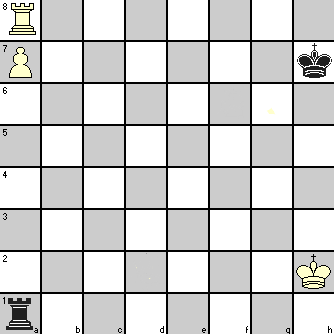You have already seen the established chess tactics for a well-known Rook and Pawn ending called Lucena Position. Here we discuss about Philidor position, another equally well-known chess ending with Rook and Pawn that gives a draw to the defending player if he plays actively and with precision.
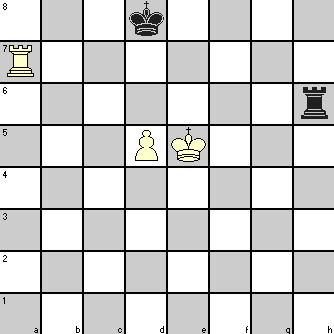
The requirements for this position are:
- The pawn of the attacking side and its King have not crossed their 5th rank. The King is in contact with the Pawn
- The defendant King is on the promotion square or on a square adjacent to it
- The defendant Rook is on the 6th rank (its own 3rd rank) preventing the enemy King from going forward
The Pawn may be on any file. But as you know from earlier discussions on Rook and Pawn endings, Pawn on Rook file makes the defending King’s job easier.
The position of the Rook of the attacking side (the side having the Pawn) is not directly relevant except for its ability to come to the help of the King and Pawn when necessary. But it is in the interest of the attacking side not to allow the defending King to come forward and create complications. The Rook positioned on the 7th rank keeps the defending King confined to its base rank.
However, check by the attacking Rook does not help in any way as the defending King keeps shuttling between the queening square and the square in front.
The defending side’s strategy:
So long as the Pawn does not move to its 6th rank, the defendant Rook keeps shuttling on that rank (which is its 3rd rank). If the Pawn moves to the 6th rank, the defendant Rook should go to its 7th or 8th rank and keep giving check from behind. There is no respite from check as the attacking King cannot take shelter behind the Pawn.
If the attacking side’s Rook tries to interpose, the defendant should exchange the Rooks. Since defendant King is already in front of the Pawn, all it has to do is to maintain opposition to enemy King, and the ending is a draw.
You can see that if the defending side plays passively and allows the enemy King to get to the square in front of its Pawn and the defending Rook is unable to deliver check, it will be a win for the attacking side. So the defending player has to remain alert if he has to get a drawn game.
A possible sequence of moves in the diagram position is shown below.
Without exchange of Rook:
| 1. | Rg7 | Rb6 | ||
| 2. | Rh7 | Rg6 | ||
| 3. | d6 | Rg1 | As the White Pawn has advanced, White K cannot any more take shelter behind the Pawn, so it is safe to move the Black R. If it were done earlier, White would have played Kd6 with a win. | |
| 4. | Ke6 | Re1+ | ||
| 5. | Kd5 | Rd1+ | ||
| 6. | Ke5 | Re1+ | ||
| 7. | Kd4 | Rd1+ | ||
| 8. | Ke5 | Re1+ | and so on without any headway |
With exchange of Rook:
| 1. | Rg7 | Rb6 | ||
| 2. | Rh7 | Rg6 | ||
| 3. | Rf7 | Rb6 | ||
| 4. | Rf6 | Rxf6 | If Black avoids exchange, White K gets access to d6 | |
| 5. | Kxf6 | Kd7 | ||
| 6. | Ke5 | Ke7 | Black must retain opposition to prevent White King’s access to d6 | |
| 7. | Kd4 | Kd8 | ||
| 8. | Kc5 | Kc7 | ||
| 9. | d6+ | Kd8 | ||
| 10. | Kc6 | Kc8 | ||
| 11. | d7+ | Kd8 | ||
| 12. | Kd6 | drawn due stalemate |
